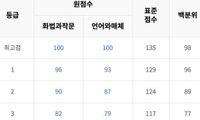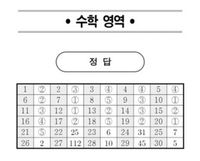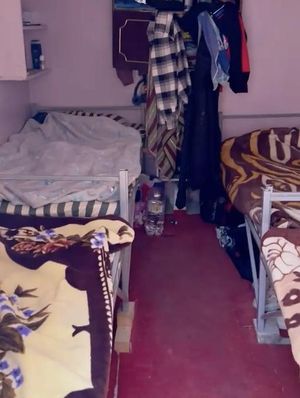On June 4, 2025, South Korea conducted the 2026 College Scholastic Ability Test (CSAT) June Mock Exam, a critical milestone for high school students preparing for the official university entrance exam scheduled for November 13, 2025. Originally slated for June 3, the exam date was postponed by one day due to the 21st presidential election, but the nationwide testing proceeded smoothly under the supervision of the Korea Institute for Curriculum and Evaluation (KICE) for seniors and the Busan Metropolitan City Office of Education for freshmen and sophomores.
This mock exam covered all subjects, including second foreign languages and Chinese characters, and followed the exact timetable of the upcoming CSAT. The test started with the Korean Language section, followed by Mathematics, English, Korean History and Inquiry, and concluded with second foreign languages and Chinese characters in the afternoon. The format was designed to mirror the official CSAT closely, providing students with an invaluable opportunity to assess their academic standing and refine their study plans.
Scores for the June mock exam are scheduled to be released on July 1, 2025. According to EBS i, a prominent educational broadcaster, the cut-off scores for the highest grade (1st grade) stood at 129 points for Korean Language and 133 points for Mathematics among high school seniors. Admissions experts noted that this mock exam was generally easier than the June 2024 mock exam and comparable to or slightly easier than last year's official CSAT, though student perceptions varied. A survey revealed that 36.6% of students found the exam slightly difficult, 30.1% considered it normal, 17.6% said it was slightly easy, 11.8% found it very difficult, and 3.9% thought it was very easy.
Delving deeper into the Mathematics section, Etoos, a respected educational analysis firm, reported that the overall difficulty was similar to last year's CSAT, but the Calculus portion was notably more challenging. The common subjects section introduced previously unseen question types, including sequence problems and applications of differentiation. Particularly, questions 15 and 22 stood out as difficult. Question 15 focused on differentiation, requiring students to infer the definition of the differential coefficient and the shape of a function's graph, while question 22 asked for the interpretation of an exponential function's graph.
In the selective subjects, Probability and Statistics and Geometry maintained a difficulty level akin to last year. Probability and Statistics questions tested students' ability to classify cases for conditional probability, apply the addition theorem of probability, and use combinations with repetition to determine the number of functions. For example, question 28 involved calculating conditional probability in independent trials, question 29 used the addition theorem to find mathematical probability, and question 30 required students to find the number of functions using repeated combinations. Although question 30 demanded careful interpretation of the function's conditions, students well-prepared with past exam materials could solve it without excessive difficulty.
Calculus questions were more demanding. Question 28 entailed using differentiation laws to deduce the graph of a function by analyzing the signs of function values and derivatives, a high-difficulty problem that likely felt challenging to students. Question 29 required inferring a sequence from term values and the sum of a geometric series, while question 30 combined absolute value composite functions and the properties of cubic function graphs to deduce the function, marking it as a particularly tough problem.
In Geometry, the exam excluded spatial figures and coordinate geometry, topics often challenging for students, focusing instead on familiar types from conic sections and plane vectors. Questions 28 and 29 tested the use of ellipse and hyperbola definitions to calculate lengths, while question 30 examined the interpretation of the inner product of plane vectors to find the minimum value. This approach kept the geometry section accessible, avoiding unexpected complexity.
Meanwhile, the National Union of Academic Achievement Evaluation held the mock exam for high school sophomores on the same day. According to data released by EBS i, the Korean Language section saw a significant rise in cut-off scores compared to last year, with the 1st grade cut-off increasing from 87 to 90 points. Other grade thresholds also rose across the board, indicating a possible shift in difficulty or student performance. The average score for Korean Language among sophomores was 52.22 points, with a standard deviation of 22.22.
In contrast, the Mathematics section for sophomores showed a decline in cut-off scores for the top three grades compared to last year: the 1st grade cut-off dropped from 85 to 80 points, the 2nd grade from 73 to 68 points, and the 3rd grade from 61 to 54 points. However, the cut-offs for 4th grade and below were stable or slightly increased. The overall average score in Mathematics was 35.87 points, with a standard deviation of 21.74. The highest standard score in Korean Language remained similar to last year at 143 points, but the raw score needed to achieve 1st grade increased, reflecting a more competitive grading curve.
Following the exam, answer keys and detailed solutions for all subjects were promptly released, enabling students to evaluate their performance accurately. The mock exam's timing and structure, mirroring the CSAT, make it a crucial tool for students, especially seniors, to gauge their readiness and strategize their studies for the critical months ahead.
As the countdown to the official 2026 CSAT continues, these mock exams not only provide a snapshot of current academic standings but also highlight areas requiring focused effort. The slightly increased difficulty in calculus and the nuanced shifts in grade cut-offs emphasize the dynamic nature of the exam landscape, urging students to adapt and prepare diligently.
In sum, the 2026 June Mock Exam offered a comprehensive, realistic rehearsal for South Korean students facing the pressures of university entrance. With detailed analyses and accessible answer resources, it serves as both a challenge and a guidepost on the path to academic success.





